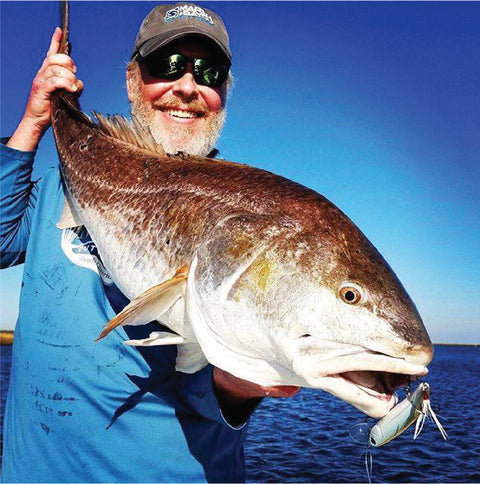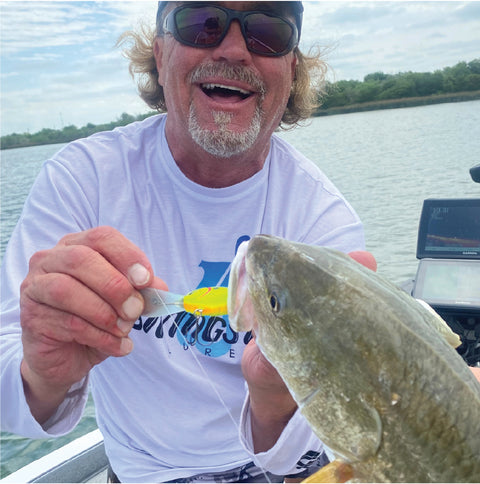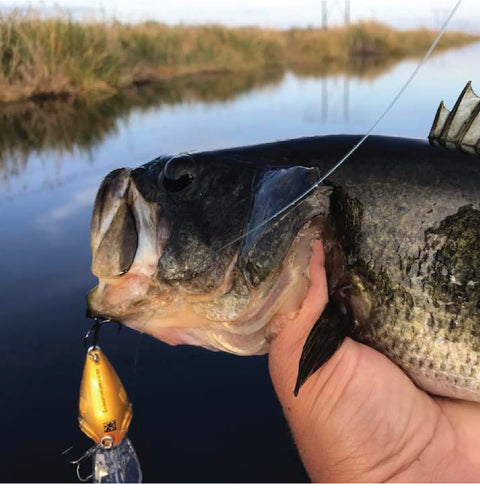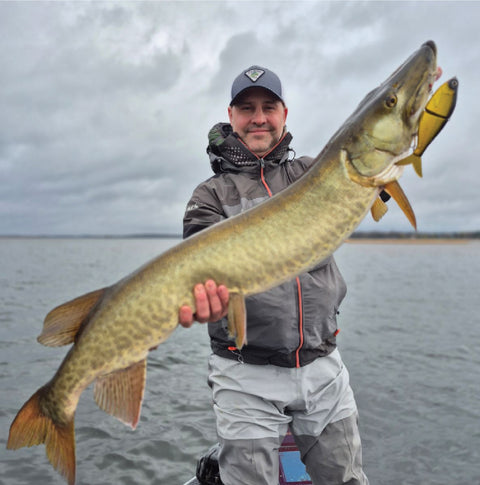Feeding Time: Rick Clunn on Fall Bass and Following the Shad
By Rick Clunn

November is one of the most dynamic months of the year for bass anglers. Across much of the country, the air turns crisp, fronts roll through, and bass seem to change moods by the hour. But while many anglers focus on how cold it feels outside, the real key this time of year isn’t the weather, it’s the water temperature.
Follow the Food, Not the Fish
When I talk about temperature being the key, I don’t mean it’s controlling the bass directly. What it really controls is the bait, primarily the shad. In the fall, threadfin and gizzard shad begin their annual migration toward the backs of creeks and rivers. They’re chasing nutrients. The backs of those creeks are where the most nutrient-rich water flows in, and that’s where plankton and in turn, shad concentrate.
Every living thing in the system is preparing for winter. The shad are feeding up, and so are the bass. It’s what some refer to as bass “putting on the feedbag”. The more you understand where the shad are positioning, the easier it becomes to find the bass.
Why the Creeks Matter
No matter how big or small your lake is, the major creeks and river channels bring in nutrients. As those nutrients collect in the backs of creeks, the shad gather. That’s where I start looking every fall. And when the water level begins to drop, as it often does this time of year, I key in on shallow flats and points in those same areas.
Even when a cold front moves through, those shallow flats warm up faster on sunny afternoons than adjacent water does. That can keep both bait and bass active longer than you might expect.
Reading the Signs
On Grand Lake in Oklahoma not long ago, I saw this in real time. Before a front, water temperatures were in the upper 60s to low 70s, and the shad were thick in the backs of creeks. You could literally follow the birds to find the bass blowing up on the surface.
When the front came through, water temperatures only dropped a few degrees, but that was enough. The shad didn’t vanish completely; they just dropped four or five feet deeper. Suddenly, you couldn’t see them, and the visual cues disappeared. That’s when your electronics and your intuition become critical. You’ve got to locate the depth where those baitfish are holding and adjust your presentation accordingly.
Why Topwater Still Shines

If I had to pick one category of bait for October and November, it would be topwater. A lot of anglers think of topwater as a summer tool, but in the fall, when bass are chasing shad, it’s still incredibly effective.
I’ll rotate between several styles depending on what I’m seeing. Sometimes I’ll try to match the size of the shad, but not always. When there’s a ton of bait present, I actually prefer to throw something bigger, something that stands out from the crowd. Upsizing is a great way to target quality fish rather than getting lost in a sea of small bites.
A walking-style bait like the Livingston Walking Boss can be deadly in those situations. It lets you cover water quickly and draw strikes from aggressive bass that are already keyed in on surface activity. When the fish get a little finicky or the shad drop deeper, I might switch to a Livingston crankbait like a Bullnose or another offering that matches the baitfish profile but runs just below the surface.
Adjust, Don’t Overreact
The biggest mistake I see anglers make in November is overreacting to cold fronts. Yes, they change things, but not always as drastically as we think. As long as the water temperature stays relatively stable, bass will remain active even if the shad move a few feet deeper.
Stay in tune with the water, not the air. Let the shad show you where to go, and don’t be afraid to experiment. The fall bite rewards those who pay attention, think a little differently, and trust what the lake is telling them.
That’s what makes this time of year so much fun, you get to figure it out.
Rick Clunn











